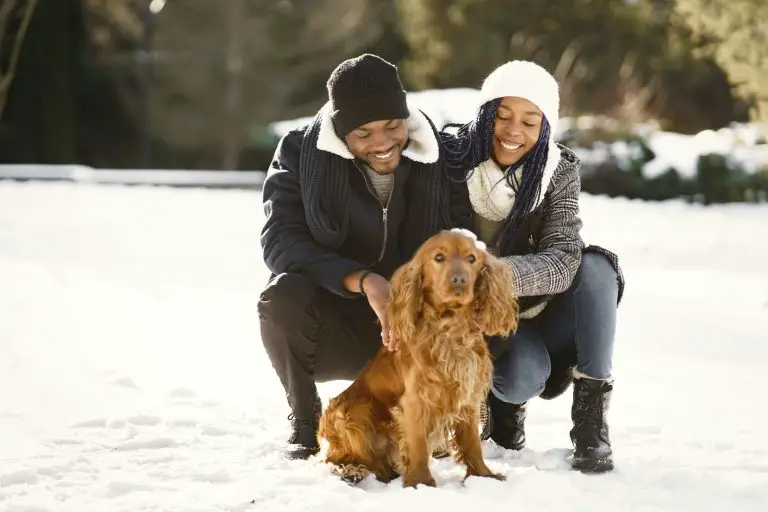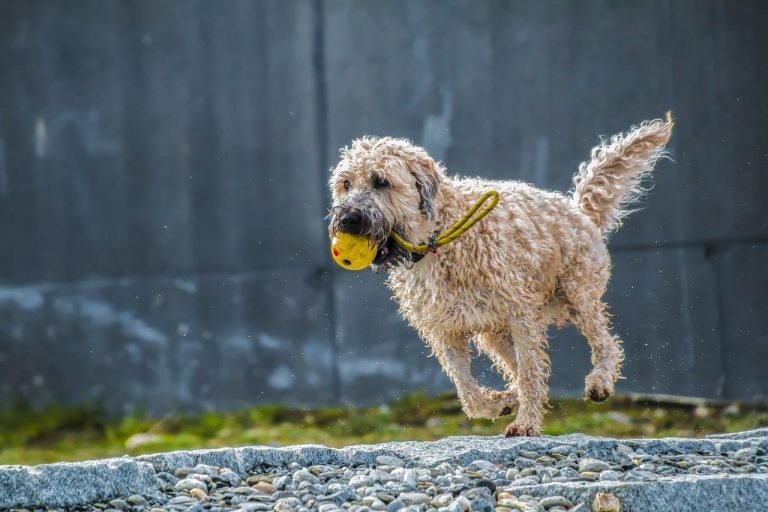Catching your dog staring at the wall is disturbing. You’ll continuously wonder, why is my dog staring at the wall? Is there something there?
You might wonder if he can hear or sense something you can’t. It’s an eerie experience, but there are reasons behind everything our dogs do. Whenever they exhibit any strange behavior, you need to examine it and make sure that it is nothing serious. So yes, if your dog is staring at the wall, you should be worried.
When you get your first dog, all of his unusual behavior is going to confuse you. All new dog owners, or dog owners whose dogs are going through certain experiences for the first time, are worried that they’ve done something wrong. However, if you keep a close watch on the behavior, you and the vet will be able to determine if it’s dangerous.
Since our dogs don’t know how to tell us if there is something wrong with them, it’s up to us to make sure whatever they tell us through their behavior isn’t ignored. It’s possible that when you ignore the signs that your dog is trying to convey to you, you’ll miss out on solving a potentially dangerous problem before it’s too late.
Sometimes, your dog’s strange behavior can be discounted as behavioral, or there could be a serious underlying condition as well. In some cases, your dog might occasionally stare at the wall or get lost in space. This usually isn’t a concern unless he is continually sitting with his head facing the wall or pressing his head against it.
Depending on the context of his behavior and the symptoms that accompany it, you can figure out whether his behavior needs to be examined in more detail. Let’s discuss the various reasons your dog might be staring at the wall.
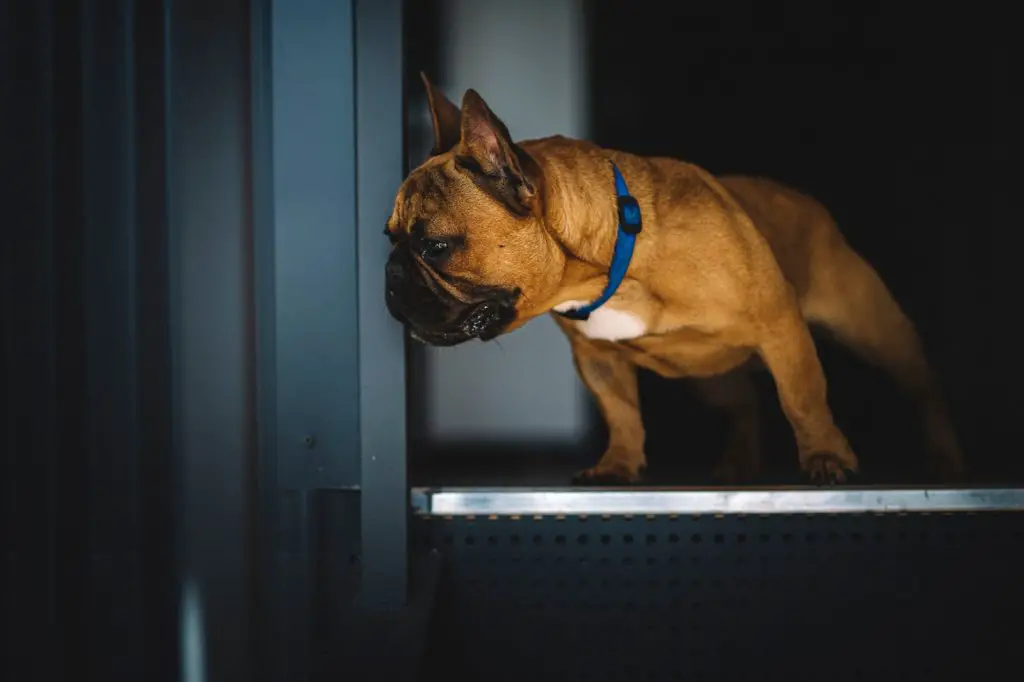
What Causes Dogs to Stare at the Wall?
Dogs being on the other side of the wall and starting at it seems strange to most dog owners.
One reason that you might see your dog staring endlessly at a wall is that there are animals on the other side of the wall that you aren’t able to pick up on. These can be squirrels, raccoons, or mice, among other creatures.
Your dog can probably hear them scurrying on the other side of the walls, which is why he’s listening to them and trying to catch a glimpse.
If your dog is staring at a wall, along with barking and growling at it, then chances are it’s because he can hear an animal. He might also scratch the wall and look at it angrily because he is trying to scare the threat away.
The best bet for you here is to call an exterminator and get the infestation cleared out. You never know, there could be an entire colony of ants, or a disgusting insect family living inside your walls.
Another way to confirm that your dog is, indeed, staring at creatures in the wall, is to sit with him and see if you can also hear a noise in the wall. If he follows the sound by moving around, then there’s something there that he’s paying close attention to.
Looking for Attention
Human or dog, we all want attention. If you’ve ever scolded your dog for staring and growling at the wall for too long, he probably knows that it’s something you don’t like. If he’s ever feeling like you aren’t giving him attention, he might stare at the wall to get you to scold him and notice him.
To deal with a situation like this, you need to start paying more attention to your dog and taking him on more adventures with you. If your dog needs to stare and growl at walls to get your attention, the chances are that you are not giving him as much attention as he needs to stay happy.
Paranormal Activity
We’re going first to go ahead and say that this is rarely going to be the reason why your dog is staring at the wall. However, it would be cool to think that there’s a furry, four-legged, paranormal activity sensor right in your household.
Although there is no scientific evidence to prove that dogs can sense ghosts or spirits in your house or your walls, there’s no proof that they can’t, either. However, as a smart and responsible dog parent, you should probably get your dog checked before dismissing his behavior as he is communicating with ghosts.
Cognitive Dysfunction Syndrome (CDS)
This is also known as dog dementia, and it is a horrible feeling to discover that your beloved pet might be suffering from this condition. Sometimes, when your dog has been caught staring at the wall or at nothing, multiple times, for long durations, he could be diagnosed with CDS.
This usually occurs in old dogs. It’s similar to Alzheimer’s disease in humans and often happens because our dogs have started living for longer than they used to. Some of the symptoms coincide with other medical conditions, so you should always get it verified from a vet.
CDS causes your dog’s cognitive function to degrade. He can no longer use his brain as effectively as before. It happens to almost 28 percent of dogs that are between 11 and 12 years old, and the percentage increases as your dog gets older. Sometimes, a dog can go the rest of his life without getting any treatment for CDS, or even getting diagnosed.
Symptoms of CDS
You need to be extra vigilant if your dog is a senior canine and exhibits any strange behavior because you don’t want him to be living a life of pain when you can do something about it. Other symptoms accompany the wall-staring, with some of them being:
- Walking around looking confused and not finding a place to sit down
- Going under furniture and not being able to come out
- Going into small corners and sticking and standing there with their head inside only
- Getting lost in places that they are familiar with
- Going outside to pee but forgetting what they went out for, then returning indoors and peeing
- Forgetting the training you gave them
- Walking away as you pet them
- Getting scared of people that they know
- Not responding to their name
- Sleeping more in the day and not sleeping at night
- Having trouble finding their food and water
There are many symptoms of CDS, which are also symptoms of other, less severe conditions as well. For example, your dog may be peeing in the house because he has a bladder or kidney problem. He could also have trouble responding to his name because of a hearing problem.
Sometimes, you might dismiss the symptoms if your dog only has a few of them. This makes it harder to diagnose because there is always the possibility that it is something else. Check with a vet to eliminate any other causes before you conclude that your dog has CDS.
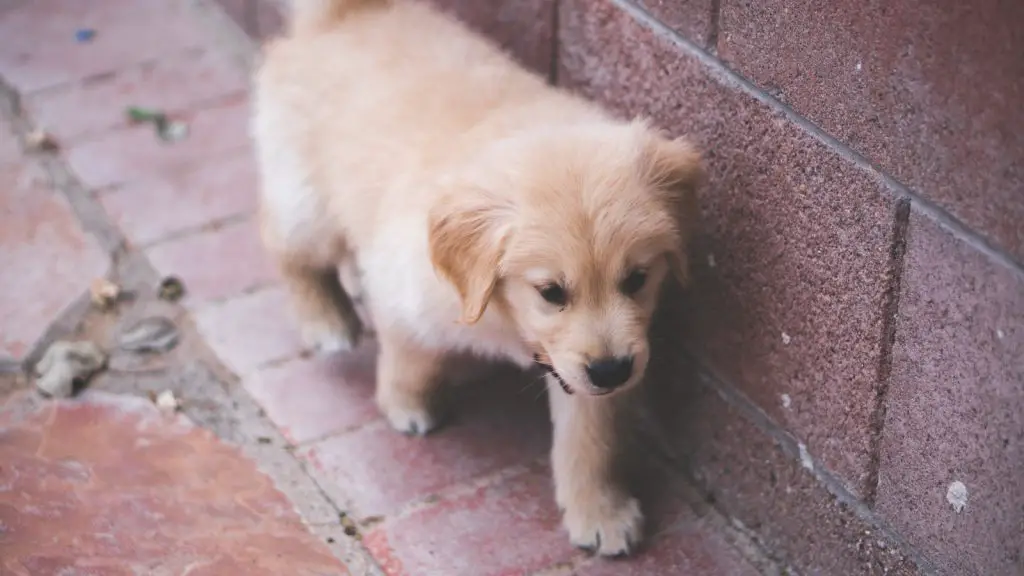
What Happens if Your Dog Has CDS?
Once your vet has diagnosed your dog with CDS, there are ways to make his life better. The vet might suggest that you mentally stimulate your dog more, which will help restore some of his cognitive function. You might be asked to engage in more games with him or taking him out to exercise. You might also have to feed him more antioxidant-rich food that’ll strengthen his cognition.
Your vet might also prescribe medicines that will help deal with the other symptoms your dog experiences in addition to the wall-staring. They can prescribe medications that will help your dog sleep better at night and reduce the anxiety he feels. They’ll also tell you how to manage behavioral changes like peeing in the house and being afraid of familiar family members.
Seizures
We usually assume that dogs that have seizures will shake uncontrollably and start frothing from their mouths, but this is not always the case. Sometimes, your dog’s seizures can also be more subtle, like in the form of just staring at the wall.
When your dog is staring off into space or at the wall, he could be having a partial seizure or a focal seizure. It’s not always easy to detect whether your dog is having a seizure and not staring at the wall for some other reason, so the best way to catch it is to see if it happens several times. If it is regularly recurring, then your dog could be having seizures, and you need to take him to a vet immediately.
What Happens if Your Dog Has Seizures?
If your vet confirms that your dog is having seizures, they’ll start the process of finding out what is causing the seizures. Your dog could have epilepsy, a tumor, or in some cases, even cancer. It’s always a smart idea to show your dog to a vet to make sure you aren’t ignoring the symptoms of something dangerous, like poisoning or tumors.
Depression
Another reason why your dog might be sitting and staring at the wall all day is that he is depressed. Dogs are susceptible to emotional and environmental changes, so there are a variety of reasons why your dog has depression.
If there has recently been a death in your family, of someone that your dog was extremely attached to, he could become depressed. If someone has moved out, or an old pet has died, he could become depressed from missing their presence. Another reason for depression in dogs it shifting to a new house or locality, where he doesn’t recognize the environment.
If you’ve made drastic changes in your house and then found yourself wondering, ‘why is my dog staring at the wall?’ it could be interlinked.
You have to keep in mind that although your home is not the only place where you spend your time, for your dog, the environment in your house is the primary environment that he interacts with regularly.
If the people of the house change, such as with a change in owners, your dog will become very emotionally vulnerable and depressed.
Another reason why dogs can become depressed is because of a lack of attention. If you’ve recently got a job that keeps you busier than before, you might not have enough time for your dog anymore.
If you’re playing with him lesser or taking him out for shorter time slots, he is going to suffer way more than you will with the lack of attention. The time with you is the only time he gets to be outside and enjoy the fresh air, and if you make him compromise on that, he could resort to spending his time staring sadly at the wall.
One way of detecting depression in your dog is if he still gets as happy about day-to-day activities as you do. Does he still get excited when you ask him if he wants to take a walk? Does he still bark at strangers who pass by your front door?
What to Do If Your Dog Has Depression?
If you feel that your dog no longer gets excited about the same things that brought him joy before, you need to take him to a vet for further examination. It is a horrible idea to assume that he’ll get over it with time because even if he does, it is your job to help him cope and provide him the proper treatment that he needs.
The vet might suggest that you put your dog on medication that will help him lead a healthy life despite his depression. He might also need behavioral therapy that allows him to readjust his lifestyle to get the serotonin that he needs.
Head Pressing
If your dog is not only staring at the wall but pressing his head against it as well, then this is an issue that you need to see a vet for immediately. Head pressing is usually a sign of a dangerous condition that should not be brushed under the rug as playfulness.
If your dog is pressing his head against the wall, there is most likely an underlying condition that he is suffering from. He could have a brain tumor, head injury encephalitis, an infection in his nervous system, or poisoning, among other causes. He could also have recently suffered from an accident or a stroke that you didn’t know about at all.
Dogs don’t usually get strokes, but there are specific reasons why some dogs do become victims of strokes. If your dog has metabolic issues like Cushing’s disease or problems with his kidneys, then he can have a stroke. Alternatively, if a female receives medication for incontinence, it can put her at risk for stroke.
What to Do if Your Dog is Head Pressing?
If your dog is pressing his head against the wall, you should never ignore it. You need to take him to a vet as soon as possible before his condition worsens. The vet will take a variety of tests to understand why this happened, like blood tests, blood pressure tests, and urinalysis. Your dog might also have to get an MRI done and have his eyes checked.
Prosencephalon Disease
Head pressing is not only limited to the conditions mentioned above. Your dog could also be suffering from a brain disorder known as prosencephalon disease. In this disease, your dog’s canine thalamus and fore brain are affected. These are needed in managing his body’s activity and sensory information.
The fore brain is the most significant part of the brain. Injury or trauma in the fore brain means that your dog will have trouble with many daily functions, like forgetting people and being disoriented, which includes staring at walls in confusion.
If your dog has this disease, there are some treatments you can try, to see if your dog responds positively to any of them. Some treatments that your vet might suggest are surgery or medication. You’ll also have to take your dog to a veterinary neurology specialist, who will help guide you about what kind of diet and environmental changes you need to have made.
Prosencephalon disease is not when your dog is only staring at the wall. It has to be accompanied by head pressing to be considered a possibility. If your dog is only staring at the wall but does not push his head up against it, you don’t need to worry about him having this disease, but you need to get him checked for any other issue he might have.
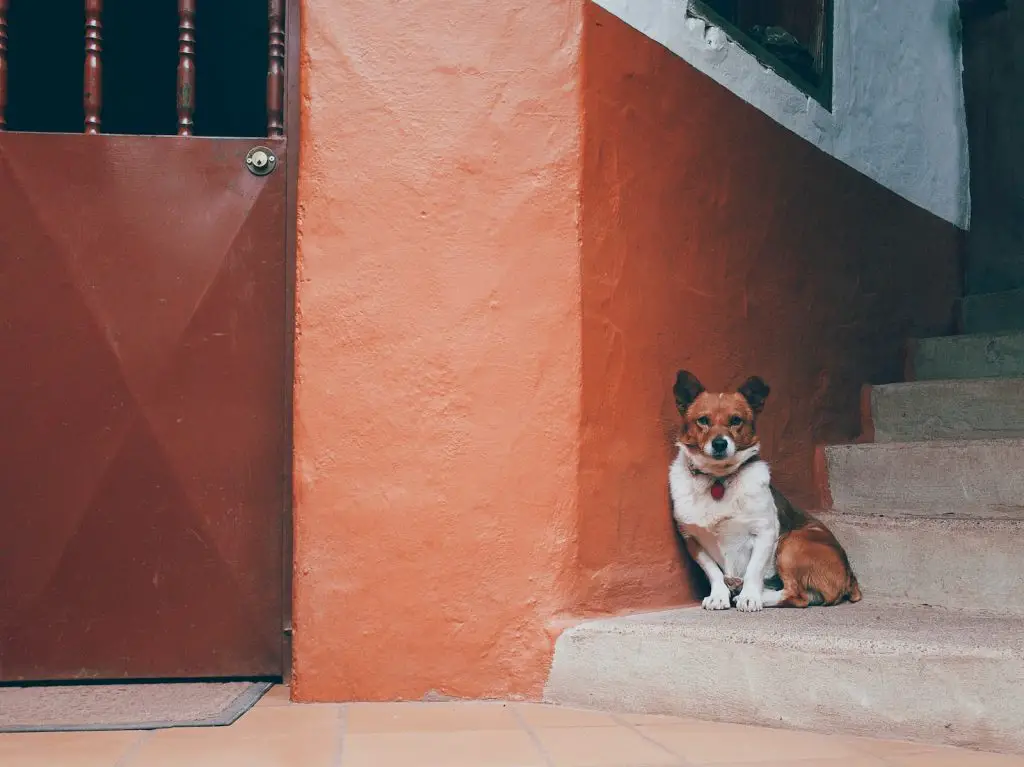
Final Thoughts on Why Is Your Dog Staring at the Wall?
Instead of wondering to yourself, why is my dog staring at the wall?’ and doing nothing about it, see a vet immediately. This might seem like a harmless activity, because your dog doesn’t seem to be in any visible distress, but staring at walls is not normal behavior.
Although it can sometimes be dismissed as your dog acting strange or seeking attention, you should never come up with those conclusions on your own. You need to let a qualified vet determine if there is a more serious underlying condition that is making your dog stare at the wall.
Most of the time, the problems that are found can be treated, even if they can’t be cured. Rather than excusing your dog’s behavior as a symptom of old age, get a vet to help you accommodate your dog and make him as comfortable as possible as he goes through a difficult time.
Paul Cook is an avid pet and animal enthusiast. He spent much of her childhood on a small farm in rural Iowa. When in high school, Paul nursed an entire box of newborn, and recently dumped, kittens back to health, and successfully found homes for all of them. He’s presently the dog-dad of nine beautiful dogs, Bruno, Lester, Sandy, Bailey, Dio, Pat, Max, Brutus, and Nora. In his career life, Paul has 20+ years of writing experience as a content writer and content collaborator across a host of verticals. When he is not writing, he is spending time with his dogs.
Did you like this article?


